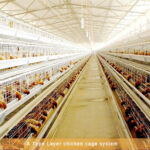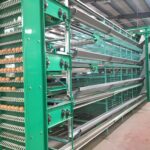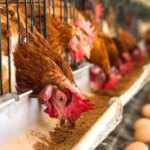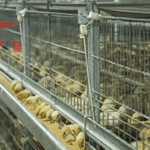Reasonable water supply for chickens in summer
In the summer, the temperature has gradually increased, and it has entered a new stage for the chicken industry. Because it is easy to be in the summer because the humidity and density of the chicken battery cages are large. If the ventilation is poor and the drinking water is insufficient, it is easy to generate high temperature. Chicken disease, so we must do a good job in the prevention and treatment of chicken disease in high temperature weather. Temperature has the greatest impact on the performance of chickens. In the brooding period, the chicks have poor resistance and high temperature requirements. In the breeding and laying stages, the appropriate temperature is the guarantee for the normal performance of the chickens. And temperature is the primary environmental factor that causes heat stress in poultry and affects the health and performance of the flock.
If the temperature is higher, the feed intake of the chicken is decreased, the feed conversion rate is decreased, the weight gain of the broiler is slowed down, the egg weight is reduced, the eggshell quality is decreased, the egg production rate is decreased, the fertilization rate and hatching rate of the egg are lowered, and the result is The resistance and immunity of the chicken decreased, and the death of the pheasant rose until a large number of hot dead chickens. The death of broilers before 5% of the market was related to heat stress.

In summer, the weather is hot and the water consumption of chickens increases. Reasonable water supply is the key to the growth and laying of chickens. Chicken farmers can supply chickens with the best water consumption.
Increase by age. 1 week to 6 weeks old chicks, 20 ml to 100 ml per chicken per day; young chickens from 7 weeks to 12 weeks old, 100 ml to 200 ml per chicken per day; laying hens, each day Chicken water supply 230 ml to 300 ml.
Determined according to the proportion of feed intake. Under normal temperature, the amount of drinking water is twice that of feed intake; in high temperature environment, the amount of drinking water is 5 times that of feed intake.
Determined according to the egg production rate. When the egg production rate is 50%, the water requirement per laying hen is 170 ml per day; for every 10% increase in egg production rate, the water consumption will increase by 12 ml. The advantage of controlling the drinking water of the laying hens is to avoid the gluttony of the chickens and cause watery diarrhea.
Supply cold water at the optimum temperature. When the summer weather is hot, it is best to give broilers a cool drink from 8 degrees Celsius to 12 degrees Celsius. Broilers drink cold water from 8 degrees Celsius to 12 degrees Celsius, are refreshing and active, increase feed intake, significantly increase feed conversion rate, and promote weight gain.
In summer, the weather is hot, and the amount of water in the chicken increases. Reasonable water supply is the key to the growth and laying of the chicken.










